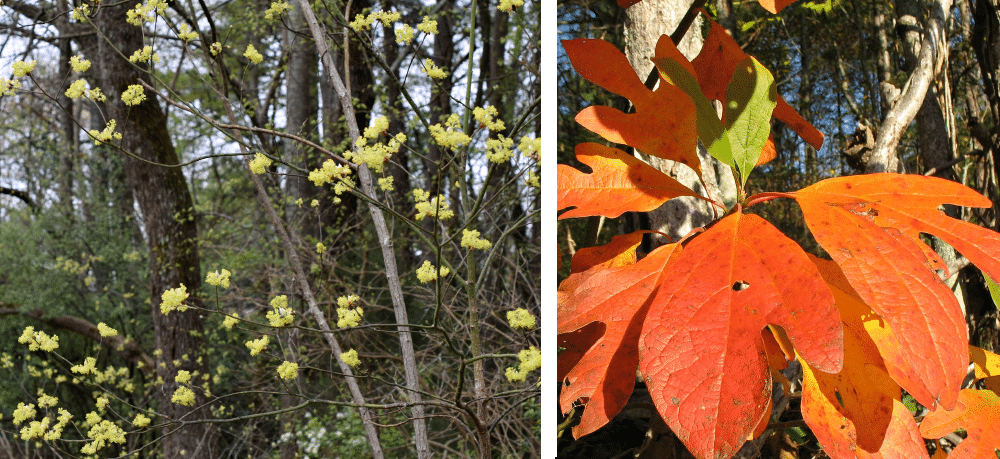Sassafras in spring and fall. Note the three leaf types: single, two lobes, and three lobes.
Do you find common and Latin plant names confusing? Well, Sassafras is easy to remember because it works for both – Sassafras albidum is the Latin name too. Sassafras is a small to medium-sized deciduous tree that is native throughout Georgia. It is often known these days for two characteristics: the plant has 3 possible leaf shapes, including the well-known “mitten” shape; and it has beautiful orange fall color. Some people might remember that it has been used for flavoring and medicinal qualities in the past, but the FDA has banned the use of it now because of the carcinogenic properties of safrole (look for safrole-free sassafras oil instead). Powdered sassafras leaves are used to make filé, a thickening agent for gumbo.
The sassafras tree is also very beneficial to nature. It is our earliest tree to bloom in North Georgia, the clusters of small greenish-yellow flowers supporting the earliest of pollinators like small bees. Sassafras is dioecious, so male and female flowers develop on separate trees. Female flowers become drupes (berries) that are relished by birds in the fall. The foliage of sassafras supports the caterpillars of several large butterflies including the Eastern Tiger Swallowtail and the Spicebush Swallowtail as well as a number of large moths such as the Imperial Moth.
Sassafras is easy to grow in the residential landscape and should be used more often; it was our GNPS Plant of the Year in 2013, a recognition by our members that it deserves more use. It is a handsome tree from spring to fall, as far as humans are concerned, and it provides good support for the wildlife that lives with us. Fall is an excellent time to plant trees and shrubs in Georgia. Cool days and abundant winter rainfall help them get established better than any other time.
Sassafras flower and range map (source: USDA). There are definitely specimens in some unmarked counties! Go to the USDA Plants Database to learn how to submit a distribution update.


